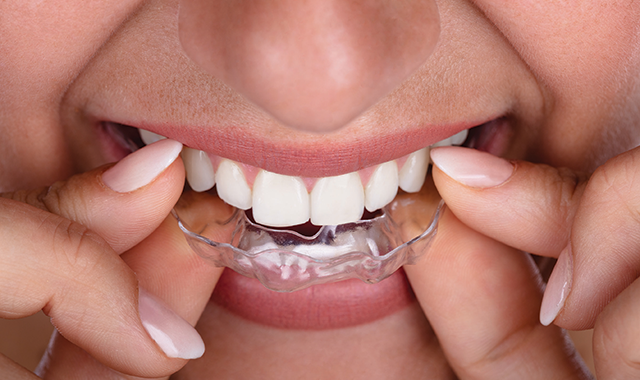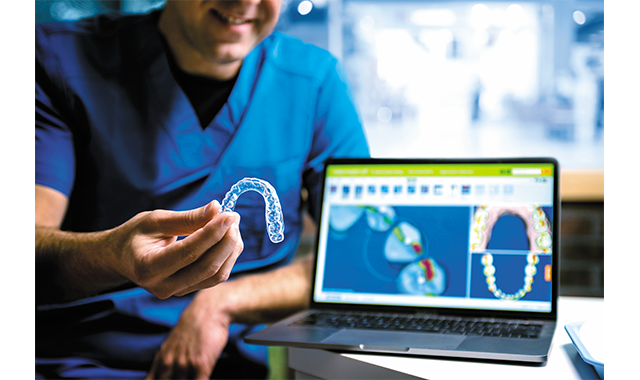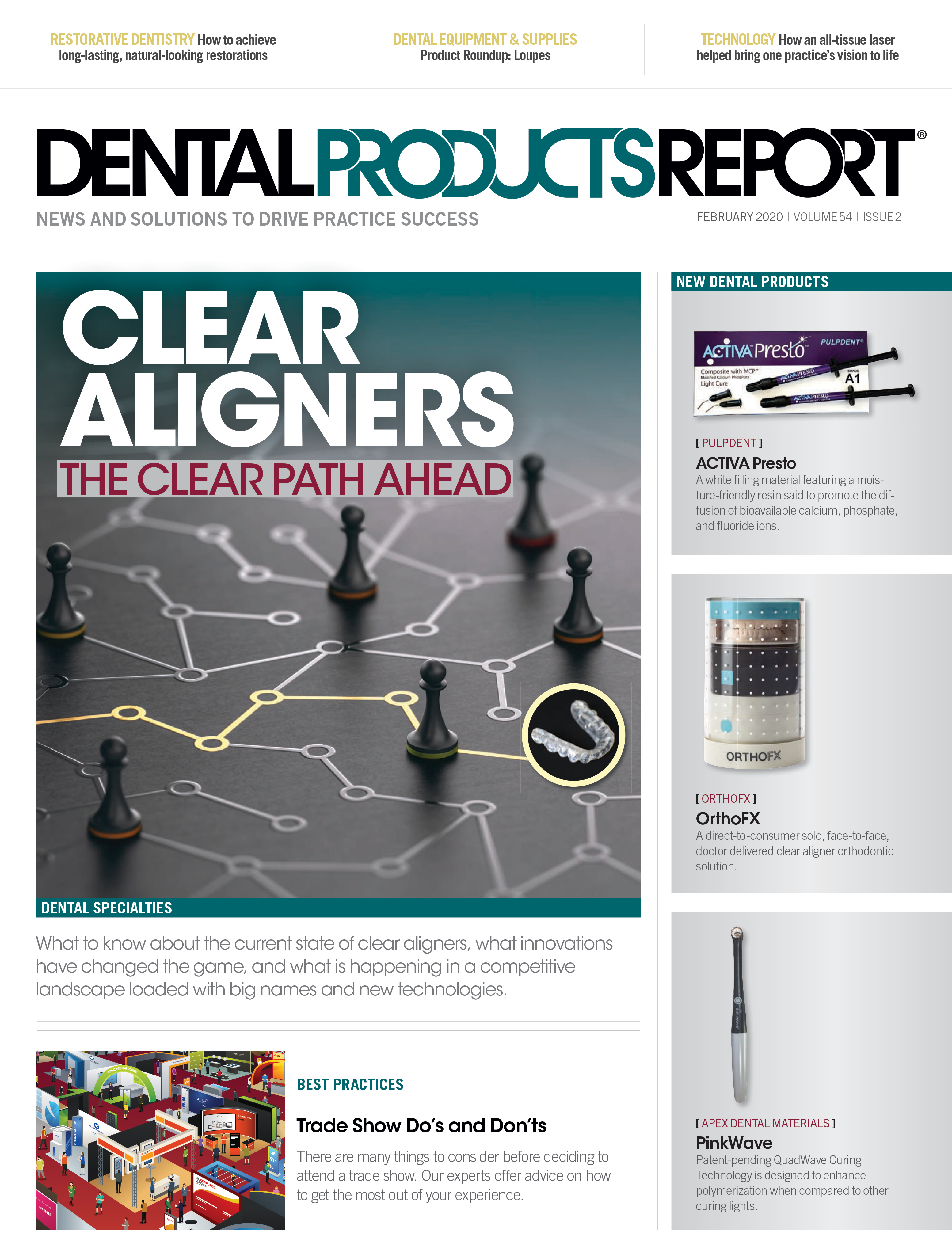The Short & Sweet on Going Straight

A little more than 10 years ago, my good friend radiologist Dr. Dale Miles contacted me. The reason was the American Academy of Oral & Maxillofacial Radiology was having their annual meeting in my hometown of Kansas City. Dale is an outstanding radiologist and a tech lover like me and he knew that I’d be amazed at what I saw at the meeting.
He was right. I sat in a huge meeting room and watched many of the world’s preeminent oral radiologists show what they were doing with a fairly new technology called Cone Beam Computed Tomography (CBCT). My biggest takeaway from that meeting was, “Thank goodness there are radiologists.” The images seemed so complex and the experts’ knowledge base was so deep I couldn’t see any way that an “ordinary, in the trenches” dentist like me could ever comprehend those images.
Fast forward to today and look back at that story. In our current environment, 3D is rapidly becoming the centerpiece of many of our procedures. We can find CBCT units in a growing percentage of offices and digital impression systems currently enjoy about 20 percent market penetration. 3D and the technologies it brings are now the state of the art for general practices and no longer the realm of incredibly smart specialists.
As the technology permeation has continued, research has created markets allowing offices to use 3D in ways we never envisioned possible. The last decade has seen the profession experience the ability to acquire large amounts of 3D patient information with CBCT units and digital impression systems. Now we are seeing advancements in the next step, which is utilizing this information to create fixed and removable prosthetics as well as surgical guides and aligners.
Just as our ability to create digital information has grown in our personal lives, our ability to create digital information in our practices has grown as well-and perhaps at a greater rate. In a bit of “chicken and egg,” our ability to store all of that information has expanded as well. That has allowed the bright people in research and development labs to then come up with new and exciting ways to use that data to provide more efficient treatment.
3D and Orthodontics
One of the areas in dentistry ready for a rapid outgrowth utilizing our plethora of 3D data is orthodontics, and more specifically, the clear aligner space.
The most well-known company in this space is Align Technologies and their Invisalign product. In the early days of clear aligners, they invested heavily in research and development and for years were the market leader. In the last couple of years, many of their patents have expired and this opened up the market to competitors and other means of moving teeth.
In the next few years doctors should be seeing both competitors doing business in a nearly identical manner as Invisalign, as well as other companies creating software that will help doctors develop “in-house” solutions.
These “in-house” solutions are where my technology fascination kicks in. We are already seeing solutions that will take digital impression data, analyze it, and then create a treatment scenario where the tooth movement is planned from start to finish. Then, utilizing this data, the aligner schedule and shape is determined. This information can then be used to fabricate the needed aligners. The reality of exam, diagnosis, creation of treatment plan today, and delivery of the first set of aligners tomorrow is already taking shape.
The aligner fabrication can be done either through a mill or a 3D printer. Both of these methods are viable and available right now. Interestingly, many people in the dental industry thought the arrival of affordable and incredibly accurate 3D printers would be the death knell of the milling market, but that doesn’t seem to be the case. By the time you read this, I will have a new 5-axis mill up and running in my office, sitting right next to the 3D printer.
As we move our offices more into the 3D realm and begin to do more “in-house” treatment, it’s becoming evident that offices that embrace this philosophy will be looking to use both of these technology pieces to better solve the “immediately deliverable” puzzle.
Nowhere is this more evident than in the fabrication of permanent prosthetics. While there are many mill options currently available that will create inlays, crowns, and bridges, those do not exist in the menu of printing options. While creating a material that can be used to produce a printable permanent restoration is certainly possible, there will be FDA approval processes and expenses that must be met before the material is a reality.
However, in the world of clear aligners, both systems of fabrication are equally viable. What we are seeing now in the decision matrix is cost and speed.
SureSmile Aligners from Dentsply Sirona are just one of many clear aligner options available today as dentists now have exciting options to consider when delivering orthodontic appliances to their patients.

Mills can quickly create models used to produce aligners. Also, a 5-axis mill can create aligners that are incredibly precise. This precision has been noted to actually increase the efficiency of tooth movement, allowing a schedule of changing aligners every two weeks instead of every three weeks.
For some patients, this option may be appealing enough to allow for a higher fee. After all, no one wants their orthodontic process to take longer. Because many mills can also fabricate aligners faster, there may very well be the idea of starting treatment today.
Printers have the advantage of being less expensive out of pocket to purchase and materials costs may be lower as well. Like most things in life and healthcare, it all comes down to how much you want to spend. At this point, I am advocating owning both devices. The flexibility that comes with having every option available to you means you are maximizing your investment.
Also, in my practice the technology IS the marketing budget because the technology is what my patients expect. Patients who understand the benefits of technology tend to refer friends who feel a similar way. The combination of treating our patients like friends and state of the art technology has served us well up to this point.
My personal feeling is the “vendor-based model” of clear aligners is not going to go away anytime soon. There will always be doctors who prefer to send cases out to have them handled by companies with a staff and background used to dealing with these things. Invisalign has done a tremendous job in creating the clear aligner market and there will always be doctors who rely on them, or a company like them, for a variety of reasons.
However, for doctors who prefer a more hands-on approach and enjoy the satisfaction that comes with it, there are going to be lots of new approaches on the market that will help appease those among us with tech appetites. Bon Appétit!
